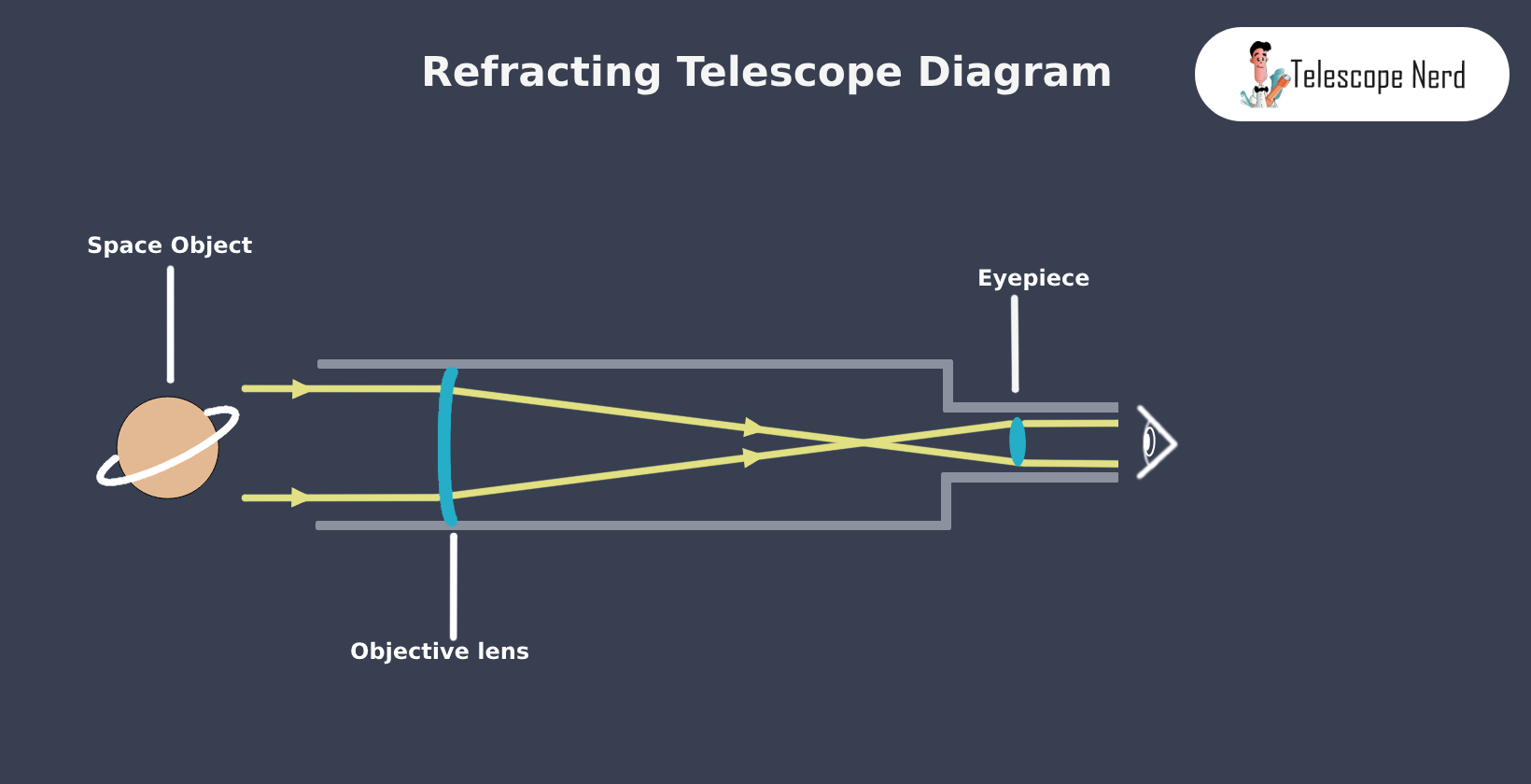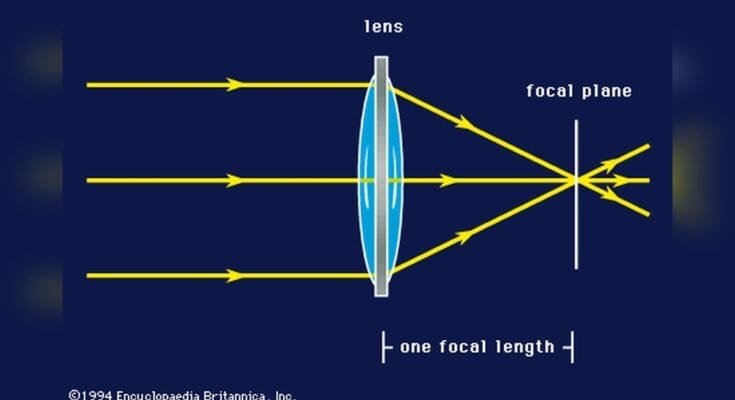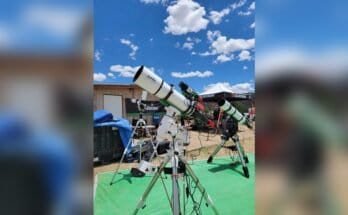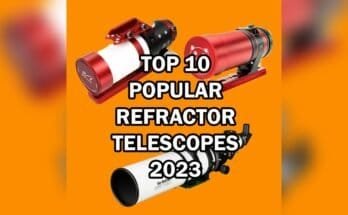Have you ever looked through a refracting telescope and wondered how it makes distant stars and planets appear so close? Understanding magnification is the key to unlocking the full power of your telescope.
This guide will break down exactly how refracting telescope magnification works, so you can get the clearest, most detailed views possible. By the end, you’ll know how to choose the right settings and make the most of your stargazing experience.
Keep reading to see your night sky like never before.

How Refracting Telescopes Work
Refracting telescopes use lenses to gather and focus light. This design helps us see distant objects clearly. Understanding how they work starts with the lens system and the way light bends through glass. These principles create the images we observe through the telescope.
Lens System Basics
A refracting telescope has two main lenses. The large lens at the front is called the objective lens. It collects light from distant objects. The smaller lens near the eye is the eyepiece. This lens magnifies the image formed by the objective lens.
Both lenses work together to create a clear and enlarged picture. The objective lens forms an image inside the telescope tube. The eyepiece then makes this image appear bigger to your eyes.
Light Refraction Principles
Light changes direction when it passes through different materials. This bending of light is called refraction. Lenses in a refracting telescope use refraction to focus light rays.
The objective lens bends light to a point called the focal point. This focusing creates a sharp image. The eyepiece lens then bends the light again to make the image larger.
Focal Length And Image Formation
The focal length is the distance between the lens and the focal point. It affects the size and clarity of the image. A longer focal length means a larger but dimmer image.
The eyepiece also has its focal length. The telescope’s total magnification depends on dividing the objective’s focal length by the eyepiece’s focal length. This calculation shows how much bigger the telescope makes objects appear.
What Determines Magnification
Magnification in a refracting telescope depends on certain key parts. These parts work together to make distant objects appear larger and clearer. Understanding what controls magnification helps you use your telescope better.
Objective Lens Role
The objective lens is the big lens at the front of the telescope. It collects light from distant objects. The size and quality of this lens affect how much detail you can see. A larger objective lens gathers more light, making images brighter and sharper.
Eyepiece Function
The eyepiece is the small lens you look through. It changes the size of the image created by the objective lens. Different eyepieces offer different viewing experiences. Switching eyepieces changes the magnification power of the telescope.
Calculating Magnification Power
Magnification equals the focal length of the objective lens divided by the focal length of the eyepiece. For example, if the objective lens is 1000 mm and the eyepiece is 20 mm, the magnification is 50 times. This simple math helps you choose the right eyepiece for your needs.
Factors Affecting Image Quality
Image quality in a refracting telescope depends on several key factors. These factors influence how clear and sharp the viewed object appears. Understanding them helps you get the best view possible.
Lens Quality And Aberrations
The lens is the heart of a refracting telescope. High-quality lenses focus light better and reduce distortions. Poor lenses cause blurry or distorted images. Aberrations like chromatic and spherical affect image clarity. These happen when light colors or rays do not meet at the same point. Good lens design and materials minimize these problems.
Atmospheric Conditions
The Earth’s atmosphere affects how light travels to your telescope. Turbulent air causes stars to twinkle and images to blur. Clear, stable air produces sharper views. Humidity, dust, and pollution can also reduce image quality. Observing on nights with calm air improves what you see.
Mount Stability And Alignment
A stable mount keeps the telescope steady and prevents shaking. Even small movements blur the image, especially at high magnifications. Proper alignment with the object ensures it stays in view. A shaky or misaligned mount makes viewing frustrating and reduces image sharpness.

Choosing The Right Eyepiece
Choosing the right eyepiece is key to enjoying your refracting telescope. It affects how clear and large objects appear. The right eyepiece helps you see planets, stars, and the moon better. This section explains different eyepieces and their effects on magnification and view.
Types Of Eyepieces
Eyepieces come in various designs. Plossl eyepieces are common and offer clear views. Wide-angle eyepieces show more sky but cost more. Orthoscopic eyepieces give sharp images with less distortion. Each type suits different observing needs. Choose based on what you want to see and your budget.
Impact On Magnification
Magnification depends on eyepiece focal length. Shorter focal length means higher magnification. Higher magnification makes objects appear bigger but can blur the image. Lower magnification shows more detail but objects look smaller. Balance magnification with clarity for the best view.
Balancing Field Of View
Field of view is the area you see through the eyepiece. Wide fields show more sky and help find objects easily. Narrow fields focus on small details but limit the view. Choose an eyepiece that balances field size and image sharpness. This balance improves your viewing experience.
Common Misconceptions About Magnification
Many people think magnification is the most important part of a refracting telescope. They believe higher magnification always shows more detail. This idea causes confusion when the image looks blurry or dim. Knowing the truth about magnification helps you use your telescope better. It also saves you from disappointment and wrong expectations.
Higher Magnification Vs. Better Image
Higher magnification does not mean a better image. It only makes objects look bigger. But bigger images can be blurry or shaky. The telescope’s lens and the sky’s clarity limit how clear the image is. Too much magnification reveals flaws instead of details. A sharp, steady image is more valuable than a large but unclear one.
Limitations Of Refractors
Refracting telescopes use lenses to bend light and form images. These lenses have limits on how much they can magnify clearly. Larger lenses are costly and heavy. Smaller lenses may not gather enough light for high magnification. Atmospheric conditions like wind and humidity also affect image quality. Understanding these limits helps set realistic expectations.
When To Use Lower Magnification
Lower magnification gives a wider view of the sky. It helps find objects quickly and see them in context. It also produces brighter and sharper images. Use low magnification for viewing large objects like the moon or star clusters. It reduces eye strain and keeps images steady. Start with low power, then increase magnification carefully.

Tips For Unlocking Stunning Views
Seeing clear and detailed images through a refracting telescope depends on a few key tips. These tips help you get the best views of the moon, planets, and stars. Simple adjustments and care can improve your experience greatly.
Optimal Magnification Settings
Start with low magnification to find your object easily. Low power shows a wider view and helps locate stars. Increase magnification slowly to see more details. Avoid very high magnification; it can make images blurry. Each telescope has a limit for clear magnification. Stay within this limit for sharp views.
Using Filters And Accessories
Filters reduce glare and improve contrast on bright objects. Moon filters make the lunar surface easier on your eyes. Colored filters highlight details on planets like Jupiter and Mars. Use a Barlow lens to increase magnification without changing eyepieces. Choose accessories that fit your telescope model.
Maintenance For Clear Images
Keep lenses clean but avoid harsh cleaning methods. Use a soft brush or air blower to remove dust gently. Store your telescope in a dry, dust-free place. Check lens alignment regularly for sharp focus. Proper maintenance keeps your views bright and clear over time.
Frequently Asked Questions
What Is Magnification In A Refracting Telescope?
Magnification is how much larger the telescope makes an object appear. It depends on the focal lengths of the objective lens and eyepiece. Higher magnification reveals more detail but may reduce image brightness and clarity.
How Do You Calculate Refracting Telescope Magnification?
Magnification equals the objective lens focal length divided by the eyepiece focal length. For example, a 1000mm objective and 25mm eyepiece give 40x magnification. This formula helps users choose lenses for desired viewing power.
Does Higher Magnification Always Improve Image Quality?
No, higher magnification can blur the image if the telescope or conditions are poor. Optimal magnification balances detail and clarity. Atmospheric stability and lens quality also affect the final image sharpness.
Can Refracting Telescopes Magnify Planets Clearly?
Yes, refracting telescopes can magnify planets well with quality lenses. They provide sharp, high-contrast views of planets like Jupiter and Saturn. Proper magnification and steady conditions are crucial for clear planetary observation.
Conclusion
Understanding refracting telescope magnification helps you see distant objects clearly. Magnification depends on the lens size and focal length. Choosing the right lens improves what you observe in the night sky. Remember, higher magnification does not always mean better images.
Keep your telescope steady for the best view. Practice using your telescope to get familiar with its power. Enjoy exploring stars, planets, and the moon with confidence. Clear views are just a lens away.



